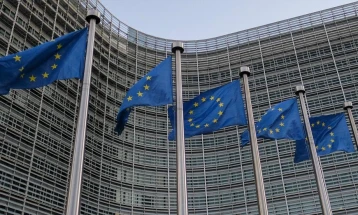SARS-CoV-2 cases continue increasing in England and Wales

London, 30 September 2022 (PA Media/dpa/MIA) — SARS-CoV-2 infections in England and Wales are continuing to increase, new figures show.
The rise means the total number of infections in the UK has also gone up, though the trend in Scotland and Northern Ireland is unclear.
Some 1.1 million people in private households across the UK are likely to have tested positive for coronavirus in the latest survey, which covers the seven days to Sept. 17 in England and the week to Sept. 20 in the other three nations, according to the Office for National Statistics (ONS).
This is a rise of 14% from 927,900 in the previous survey, which covered the week to Sept. 13-14.
It is the first time the UK-wide total has been above one million since late August, though it is still some way below the 3.8 million weekly infections in early July at the peak of the wave caused by the Omicron BA.4 and BA.5 subvariants of the virus.
The figures come as the number of people in hospital with Covid-19 is also continuing to rise.
Sarah Crofts, ONS deputy director for the Covid-19 infection survey, said it is "too early to identify whether this is the start of a new wave."
But Professor Tim Spector, co-founder of the Zoe Health Study based on coronavirus symptoms reported by volunteers across the country, said on Thursday it was "clear we're now seeing an autumn wave of Covid-19, combined with increases in hospital admissions."
In England, the number of people testing positive for SARS-CoV-2 in the week to Sept. 17 was 857,400, or around one in 65 – up from 766,500, or one in 70, in the seven days to Sept. 14.
Wales has also seen a rise. There, the latest estimate for infections is 62,900, or one in 50 people, up from 39,700, or one in 75.
In both Scotland and Northern Ireland the trend is described by the ONS as uncertain.
In Scotland, 117,100 people were likely to have had Covid-19 in the latest survey, or around one in 45, compared with 98,800 or one in 55 in the previous week.
And in Northern Ireland, the estimate is 23,100, or one in 80 people, compared with 22,900, also one in 80.
The percentage of people testing positive for SARS-CoV-2 has risen in all regions of England except the East Midlands, North East and South West, where the trend in the most recent week was uncertain.
All age groups in England are estimated to have seen an increase.
The ONS infection survey is the most reliable measure of the prevalence of SARS-CoV-2 and is based on a sample of swab tests from households across the UK.
Separate figures from the NHS show the number of people in hospital in England with Covid-19 stood at 7,024 on September 28, up 37% week-on-week.
Patient numbers topped 14,000 in mid-July at the peak of the BA.4/5 wave, after which they started to fall steadily.
This decline came to a halt in mid-September, however.
The rate of Covid-19 hospital admissions is also increasing, with 7.6 admissions per 100,000 people in the week to Sept. 25, up from 5.0 the previous week.
Rates are highest among people aged 85 and over, at 82 per 100,000.
This is up sharply from 49.4 and is the highest rate for this age group since mid-August.
Dr Mary Ramsay, director of public health programmes at the UK Health Security Agency (UKHSA), said it was "clear now that we are seeing an increase" in levels of Covid-19.
"Cases have started to climb and hospitalisations are increasing in the oldest age groups. In the coming weeks, we expect a double threat of low immunity and widely circulating flu and Covid-19, creating an unpredictable winter and additional pressure on health services," she added.







